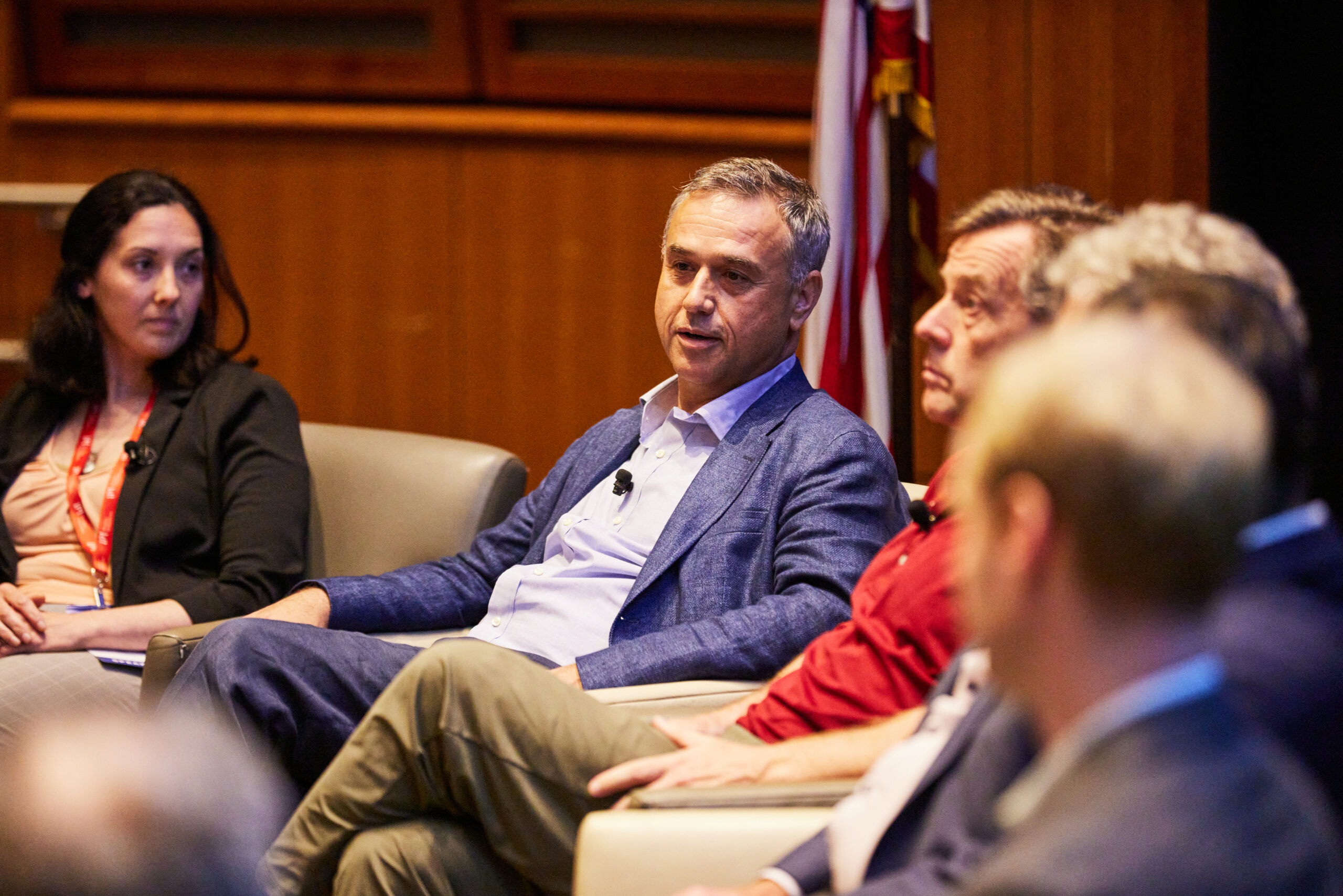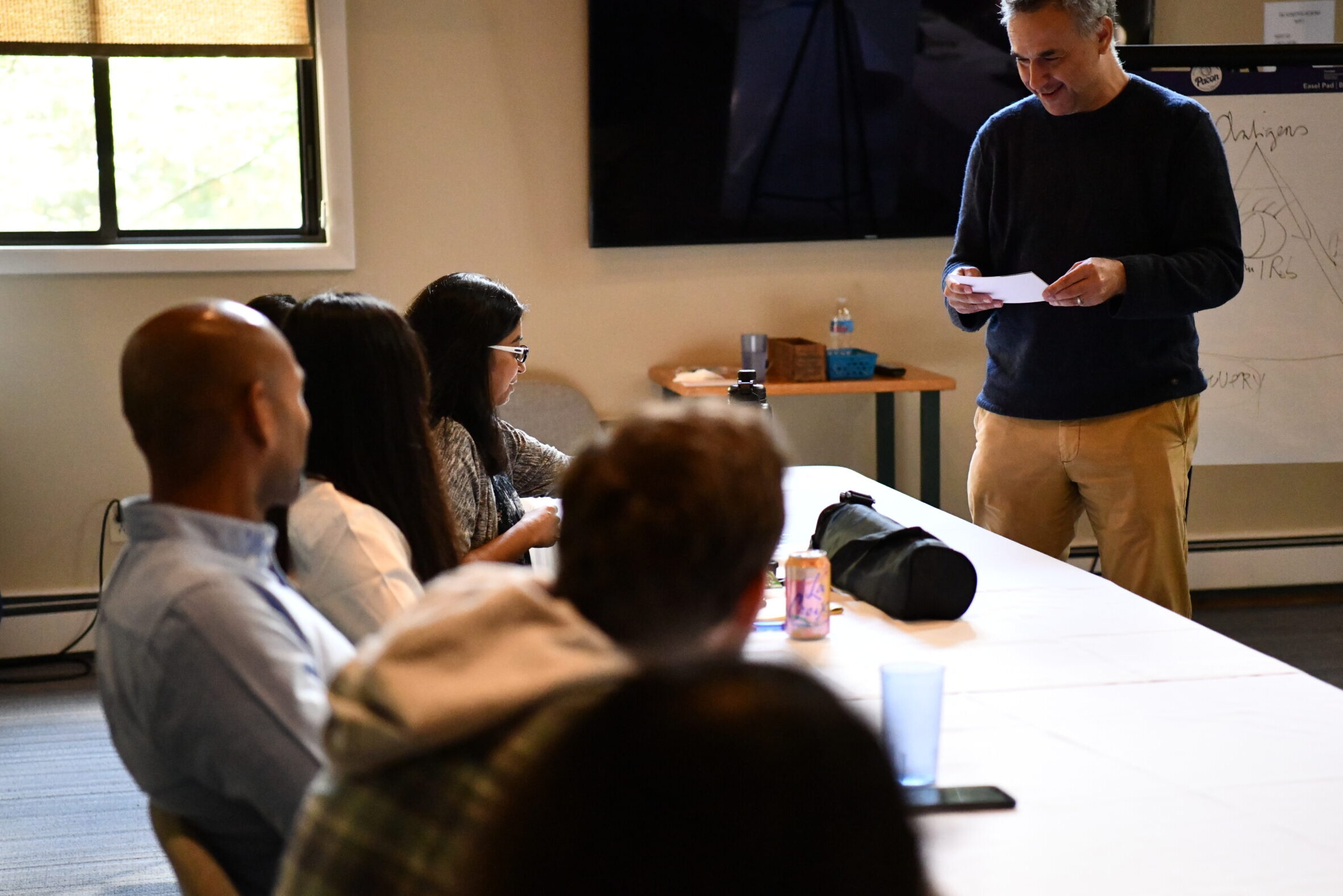This spring, the Institute for Protein Innovation (IPI) dispatched a collection of antibodies targeting members of the elusive integrin receptor family. Those antibodies, shared with researchers around the world through Addgene, marked a milestone: the launch of the organization’s antibody discovery and distribution program.
The moment, celebrated at IPI with kudos and cake, was especially meaningful for Rob Meijers, senior director of the antibody platform. From an extensive research career in structural biology, Meijers knows well the power of protein tools. He was drawn to IPI five years ago because he saw that the organization was well-positioned to discover and share much-needed synthetic recombinant antibodies for research. This first antibody release means the operation Meijers and the team have built is finally established and ready to produce.
And it signifies that Meijers can now shift focus to the next antibodies already emerging from the pipeline: a large collection for neuroscience. Meijers knows this field well from his own research on axon guidance molecules, and thus it’s an ideal place for him to pilot another key element of IPI’s approach: close collaboration with the biological research communities in need of antibodies.
In fact, the same day they were cheering the integrin antibody launch, Meijers and the team were shipping out antibodies for neuronal targets — neurexins, glypicans, ROBOs and more — to neurobiologists who had agreed to beta-test them in their own assays. The validators plan to gather (in-person and virtually) for a data-sharing meeting on June 9 and public symposium the next day.
On a somewhat quieter afternoon, we sat down with Meijers to reflect on IPI’s growing antibody collection and its open, collaborative approach.
You’re very pleased to have these new antibodies for neuronal targets. For you, what’s most exciting about them?
Neuroscience has a great need for antibodies, for several reasons. There are not many therapeutic programs to develop antibodies in this area. And a lot of the proteins in processes like neuronal wiring and migration are highly conserved. So injecting them into mice basically will not generate great antibodies.
Another problem is that these molecular programs involve a huge number of proteins and interactions. They aren’t just about one ligand binding to one receptor — these are interactomes. So what is exciting is that now, with yeast display, we can systematically discover antibodies for whole families of neuronal receptors and ligands. We don’t just go after one cool target; we try to identify the protein families in greatest need of new antibodies, and then do the whole families. That approach is sort of unprecedented.
How have you been working with the neuroscience community?
People have been very engaged. I first started talking about IPI’s neuroscience aims back in 2020 — first at Cold Spring Harbor (at the Molecular Mechanisms of Neuronal Connectivity meeting) and then in Crete (at the EMBO Workshop on Molecular Neurobiology). And each time, I would say: We will have a very exciting set of antibodies for you to test! Now when I go to Crete next week, I’ll be able to say: At last, we have them.
People are very excited to test these antibodies. I think they appreciate that IPI has a unique model: We’re a nonprofit, and we’re working to make sure our antibodies are broadly available.
Is your collaborative model for antibody validation unique?

In a way, this is a reinvention of the HLDA workshops for antibodies against leukocyte markers, which Tim Springer (IPI co-founder) helped to organize; those started back in the ’80s. There are also some initiatives in cancer. The YCharOS initiative is also pursuing an open model, although sort of in reverse — they’re validating the antibodies of various vendors.
But what we’re doing — making novel antibodies and inviting researchers to evaluate them — at the moment is pretty unique, at least in neuroscience.
Where did your focus on developing and sharing research resources originate?
At EMBL — I did my PhD there and later was a group leader, doing research and also running a protein science core facility. EMBL (the European Molecular Biology Laboratory) is an agreement between 29 countries to share resources and technology. It’s very important in that environment to develop new tools. I found it very exciting. You get to be the first to use the tools you’ve developed to make discoveries, but then also you get to share them with the larger community.
Tell me about some of the researchers working with you as antibody validators.
They have very different backgrounds. But you can see even in their publications that they’re obsessed about antibodies because they’re such important tools.
Alex Jaworski from Brown University is a great example. He’s studying ROBO signaling at the axon growth cone. We first sent him antibodies in 2020. He sliced a mouse brain, stained slices with our antibodies and couldn’t see anything. It turned out those were very wimpy antibodies.
But we kept going. We at IPI figured out how to make better antibodies. And Alex now is testing something like his third panel of antibodies. Finally, he’s being rewarded with something that works.
Besides neuronal navigation, what are some other areas of collaborator interest?
I just met with Dima Ter-Ovanesyan from the Wyss Institute at Harvard. Dima and his coworkers are looking for neuronal exosomes to use as diagnostic markers for neuronal pathologies. They need a way to pull down the neuronal exosomes, away from all the exosomes from other cell types. They’ve found a neurexin that very likely is a specific marker; now they need an excellent antibody to that protein.
We’re giving Dima a whole panel of neurexin antibodies to test — and he’s all over it. He’s testing the panel in brain fluid, cell lines … beyond what he needs to test for his purposes. For us, that’s very important — we need people willing to look at whole panels, because we want to learn if our antibodies are specific among family members.
What happens to the validation data that researchers collect?
For antibodies that succeed, everyone will be able to see the data through Addgene’s Data Hub. So users will be able to evaluate whether the antibody may be useful for their application. Transparency is very important to us.
And this will be a dynamic process. Even after antibodies are in the catalog, we will actively look at what the community is saying. If we find that an antibody doesn’t work or works in some applications but not others, we may need to make new antibodies.
Are you still building your community of collaborators?
Oh yes. At the EMBO workshop on molecular neurobiology in Crete next week, I’m going to lead a session to discuss antibody needs in the field. I want to hear people’s ideas about what our next antibody targets should be. And I’m looking for people who will be validators for our next panels. We really would like to create an international community of validators.
The response has been very positive. I find it especially encouraging that even if scientists are competing with each other, and they’re aware that we aren’t sharing antibodies exclusively with them, they’re still eager to sign up. They’re really happy to help the whole community get better antibodies.
I’m also hopeful that they may benefit from their generosity. They can use the antibodies in their research before we start publicly distributing them. They may find something interesting!
Will IPI’s efforts be limited to neuroscience?
I started with neuronal navigation — a community that I know well from my own research and that has a core set of targets everybody needs tools to study. But a lot of these targets are also important in other areas of biology: cancer, angiogenesis, stem cell biology. My hope is that the community will grow organically.

Source: Rob Meijers, rob.meijers@proteininnovation.org
Writer: Megan Talkington, megan.talkington@proteininnovation.org
About IPI
The Institute for Protein Innovation is pioneering a new approach to scientific discovery and collaboration. As a nonprofit research institute, we provide the biomedical research community with synthetic antibodies and deep protein expertise, empowering scientists to explore fundamental biological processes and pinpoint new targets for therapeutic development. Our mission is to advance protein science to accelerate research and improve human health. For more information, visit proteininnovation.org or follow us on social media @ipiproteins.


